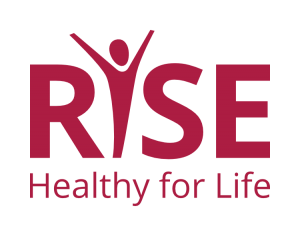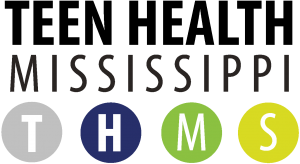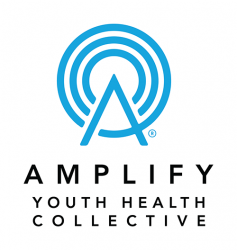RISE provides facilitator training and support for sexual health educators, including workshops, consulting, and answering question-box questions.
Training Hub
The Sex Education Collaborative Training Hub lists trainings for sex educators, facilitators, and other professionals on best practices for sharing important information with clients and the public. From teaching anatomy inclusively to effectively addressing bias in the classroom to addressing racial justice and equity in sex education, the Training Hub includes trainings, technical assistance, and policy support from state, regional, and national leaders in the field of sex education.
Please note: The Training Hub includes both in-person and online professional trainings. If you see a training you are interested in and it isn’t listed as virtual, please reach out directly to any of our members to find out what's possible!
Trainings Offered by State-Based and National Organizations
Displaying results 36 - 40 of 137What’s Triggering Our Teens? Intimate Partner Violence Edition
Participants will gain knowledge of how intimate partner violence impacts the mental, sexual and reproductive health of young people who witness and/or experience it. Participants will brainstorm strategies to intervene and learn about local, state, and national resources.
This training is designed for:
- Educators
- Teachers
- Substitute Teachers
- Counselors
- Coaches
- Parents
- Clergy
- Community Workers
- Healthcare Providers
- Healthcare Staff
- Clinicians
- Indicator 1 (K-12): Describe three distinguishing characteristics between healthy and unhealthy relationships, involving family, friends, and/or romantic partners.
- Indicator 2 (K-12): Explain three ways that healthy relationships can positively impact personal well-being.
- Indicator 5 (K-12): Describe three ways to help students set and respect personal boundaries in relationships.
Child Abuse: Recognizing Signs & Intervening
Participants will gain knowledge and develop skills required to recognize signs that a child might be a victim of abuse or neglect. Participants will learn two ways to use mandated reporting as an intervention.
This training is designed for:
- Educators
- Teachers
- Substitute Teachers
- Counselors
- Coaches
- Parents
- Clergy
- Community Workers
- Healthcare Providers
- Healthcare Staff
- Clinicians
Michigan Sex Education Policy and Law: Best Practices for Sex Education in Michigan
This training will walk participants through current Michigan law and policy as it relates to sex education in K-12 schools. We will review content requirements and spend time on Sex Education Advisory Boards (SEABs), the groups that set goals and objectives and review and recommend curriculum for their local school districts. We will share the most up-to-date, evidence-based information on sex education - content specifics, facilitation strategies, scope and sequence, outcome indications, and more. Finally, we will discuss best practices for SEAB establishment and functioning.
In this training, participants will:
- Review relevant and current data on sex education.
- Review state laws and requirements for sex education.
- Review state laws on Sex Education Advisory Boards (SEABs).
- Review SEAB logisitics, including meetings, membership, and curriculum review.
- Understand the scope of the SEAB's power and influence in a school district.
- Identify resources and next steps for SEABs.
- Discuss evidence-informed best practices for sex education programming.
- Review sex education resources and ways participants can get involved in improving sex education in their community.
- Indicator 6 (6-12): Identify three federal and/or state laws that impact young peoples’ access to effective reproductive and sexual health care (e.g. age of consent for services, confidential access to health care services, and access to condoms)
- Indicator 1 (K-12): Demonstrate three techniques to create an inclusive and affirming learning environment. (S)
- Indicator 4 (K-12): Demonstrate three strategies of a trauma-informed approach to sex education (e.g. giving trigger warnings before content on sexual assault and allowing students the right to pass as appropriate, etc.). (S)
- Indicator 5 (K-12): Describe three effective strategies for practicing skills with students.
- Indicator 6 (K-12): Describe three strategies for actively involving parents, caregivers, and other trusted adults in a sex education program.
- Indicator 7 (K-12): Demonstrate the ability to analyze and tailor lesson plans to match the age, developmental stages, cultural backgrounds, and other identities of students. (S)
- Indicator 4 (K-12): Describe three strategies for incorporating the positive and negative impacts of communicating through technology into lessons on healthy relationships.
- Indicator 5 (K-12): Describe three ways to help students set and respect personal boundaries in relationships.
- Indicator 7 (6-12): Identify three medically accurate and youth-friendly resources for STD/STI and HIV prevention, testing, and treatment
- Indicator 6 (K-12): Explain three ways that LGBQ+ youth are at disproportionate risk for health disparities.
- Indicator 7 (K-12): Identify three credible, medically accurate, youth-friendly resources that can provide information or support related to sexual orientation.
- Indicator 8 (K-12): Explain why it is essential to include positive portrayals of LGBQ+ people in lessons.
- Indicator 9 (K-12): Demonstrate three strategies that can be used to include positive portrayals of LGBQ+ people in lessons. (S)
- Indicator 2 (K-12): Name three sexual health inequities and some of their systemic causes (e.g., African American women living with HIV have expressed mistrust toward healthcare professionals, in part, as a result of systemic racism).
- Indicator 3 (K-12): Describe three ways power, privilege, prejudice, discrimination, and stereotypes related to age, race, ethnicity, sexual orientation, gender, gender identity, socio-economic status, immigration status, and/or physical or intellectual ability can impact sexual health and reproductive justice.
- Indicator 5 (K-12): Describe three strategies educators can use to acknowledge and proactively work to mitigate the impact of bias on their students’ sexual health and multiple, intersecting identities.
- Indicator 1 (K-12): Describe three health (e.g. physical, social and/or emotional) and/or academic benefits of sex education for young people
- Indicator 2 (K-12): Describe state and/or district laws, policies, and standards that relate to sex education where one teaches.
- Indicator 9 (K-12): Demonstrate three strategies that can be used to make lessons affirming for transgender and gender expansive people. (S)
- Indicator 1 (K-12): Explain the differences between personal and universal values relating to sexuality.
Sexual Health Education Essentials
Sexual Health Education Essentials is a foundational training meant to prepare sexual health educators, school personnel, and other youth work professionals to support young people. Training content is data-driven and aligned with best-practices in the field of adolescent sexual health promotion. Topics covered during pre-work and live training include holistic sexuality, adolescent growth & development, reproductive health, responding to sensitive questions, values in sexual health education, consent, contraception, and more. Sexual Health Education Essentials is recommended for anyone new to the field of sexual health education or for trusted adults working with young people in any capacity who wish to gain knowledge and strengthen their skills.
- Indicator 1 (6-12): Explain fertilization, implantation, conception, and how pregnancy occurs.
- Indicator 3 (6-12): Describe the differences in mechanisms of action and access between emergency contraception and the abortion pill.
- Indicator 4 (6-12): Explain methods of contraception, including the latest medical advances that are popular among young people.
- Indicator 6 (6-12): Identify three federal and/or state laws that impact young peoples’ access to effective reproductive and sexual health care (e.g. age of consent for services, confidential access to health care services, and access to condoms)
- Indicator 1 (K-12): Demonstrate three techniques to create an inclusive and affirming learning environment. (S)
- Indicator 1 (K-12): Describe the importance of teachers’ maintaining professional boundaries when teaching sex education.
- Indicator 2 (K-12): List three factors to consider regarding personal disclosure when teaching sex education
- Indicator 3 (K-12): Demonstrate how to reduce the impact of educators’ passive and/or active personal disclosure on the educational environment. (S)
- Indicator 4 (K-12): Explain the roles and responsibilities of a mandated reporter.
- Indicator 5 (K-12): Explain the state- and district-mandated reporting requirements and procedures.
- Indicator 1 (K-12): Demonstrate the ability to build rapport with students. (S)
- Indicator 1 (6-12): Describe HIV and three common STDs/STIs, and how each can and cannot be transmitted.
- Indicator 2 (6-12): Explain that many STD/STIs do not cause symptoms and the only way to know if you have one is to be tested.
- Indicator 2 (K-12): Define sexual orientation and sexual identity, including that everyone has both.
- Indicator 3 (6-12): Explain the difference between sexual orientation, sexual behavior, and sexual identity.
- Indicator 4 (K-12): Demonstrate the use of inclusive and affirming language. (S)
- Indicator 1 (K-12): Describe how puberty prepares the human body for the potential to reproduce.
- Indicator 1 (K-12): Explain three reasons why it is important to respond to every question students ask when teaching sex education.
- Indicator 2 (K-12): Demonstrate the ability to use medically accurate terms for sexual and reproductive anatomy, including all external genitals. (S)
- Indicator 3 (K-12): Explain the function of the individual sexual and reproductive body parts and how they typically work.
- Indicator 2 (K-12): Demonstrate the use of inclusive and affirming language. (S)
- Indicator 3 (K-12): Define gender identity and sex assigned at birth.
- Indicator 4 (K-12): Explain how gender identity and gender expression are distinct from each other and from sexual orientation.
- Indicator 1 (K-12): Explain the differences between personal and universal values relating to sexuality.
- Indicator 2 (K-12): Describe how verbal and nonverbal expression of personal values, and comfort with topics related to sex education, could impact one’s teaching
- Indicator 3 (K-12): Explain the importance of educators refraining from sharing their personal values when implementing sex education.
- Indicator 4 (K-12): Demonstrate the ability to respond effectively to students’ values-based comments and questions. (S)
Additional Trainings offered by out-of-state organizations
- ‹ previous
- 7 of 49
- next ›
"They Want Me to Teach What?!" Stepping into the Sex Educator Role
This full-day training is for educators who are newly tapped to teach sex education to teach them the necessary foundational skills. We will cover group rights, setting the classroom tone, managing potential challenges, establishing appropriate boundaries, and exploring personal values as they relate to teaching about sexuality. Participants will leave this training with an increase in knowledge, skills, and comfort to successfully teach sex ed. Registration link here.
- Indicator 1 (K-12): Demonstrate three techniques to create an inclusive and affirming learning environment. (S)
- Indicator 2 (K-12): Demonstrate three strategies for creating culturally responsive classrooms. (S)
- Indicator 3 (K-12): Describe three elements of a trauma-informed approach to sex education.
- Indicator 4 (K-12): Demonstrate three strategies of a trauma-informed approach to sex education (e.g. giving trigger warnings before content on sexual assault and allowing students the right to pass as appropriate, etc.). (S)
- Indicator 1 (K-12): Describe the importance of teachers’ maintaining professional boundaries when teaching sex education.
- Indicator 2 (K-12): List three factors to consider regarding personal disclosure when teaching sex education
- Indicator 3 (K-12): Demonstrate how to reduce the impact of educators’ passive and/or active personal disclosure on the educational environment. (S)
- Indicator 4 (K-12): Explain the roles and responsibilities of a mandated reporter.
- Indicator 1 (K-12): Demonstrate the ability to build rapport with students. (S)
- Indicator 2 (K-12): Demonstrate three student-centered instructional approaches that support a variety of learning styles. (S)
- Indicator 3 (K-12): Explain the differences between positive vs. shaming approaches to teaching sex education.
- Indicator 5 (K-12): Describe three effective strategies for practicing skills with students.
- Indicator 1 (K-12): Explain three reasons why it is important to respond to every question students ask when teaching sex education.
- Indicator 2 (K-12): Demonstrate the ability to effectively respond to three different types of challenging questions. (S)
- Indicator 1 (K-12): Describe three health (e.g. physical, social and/or emotional) and/or academic benefits of sex education for young people
- Indicator 2 (K-12): Describe state and/or district laws, policies, and standards that relate to sex education where one teaches.
- Indicator 1 (K-12): Explain the differences between personal and universal values relating to sexuality.
- Indicator 2 (K-12): Describe how verbal and nonverbal expression of personal values, and comfort with topics related to sex education, could impact one’s teaching
- Indicator 3 (K-12): Explain the importance of educators refraining from sharing their personal values when implementing sex education.
- Indicator 4 (K-12): Demonstrate the ability to respond effectively to students’ values-based comments and questions. (S)




